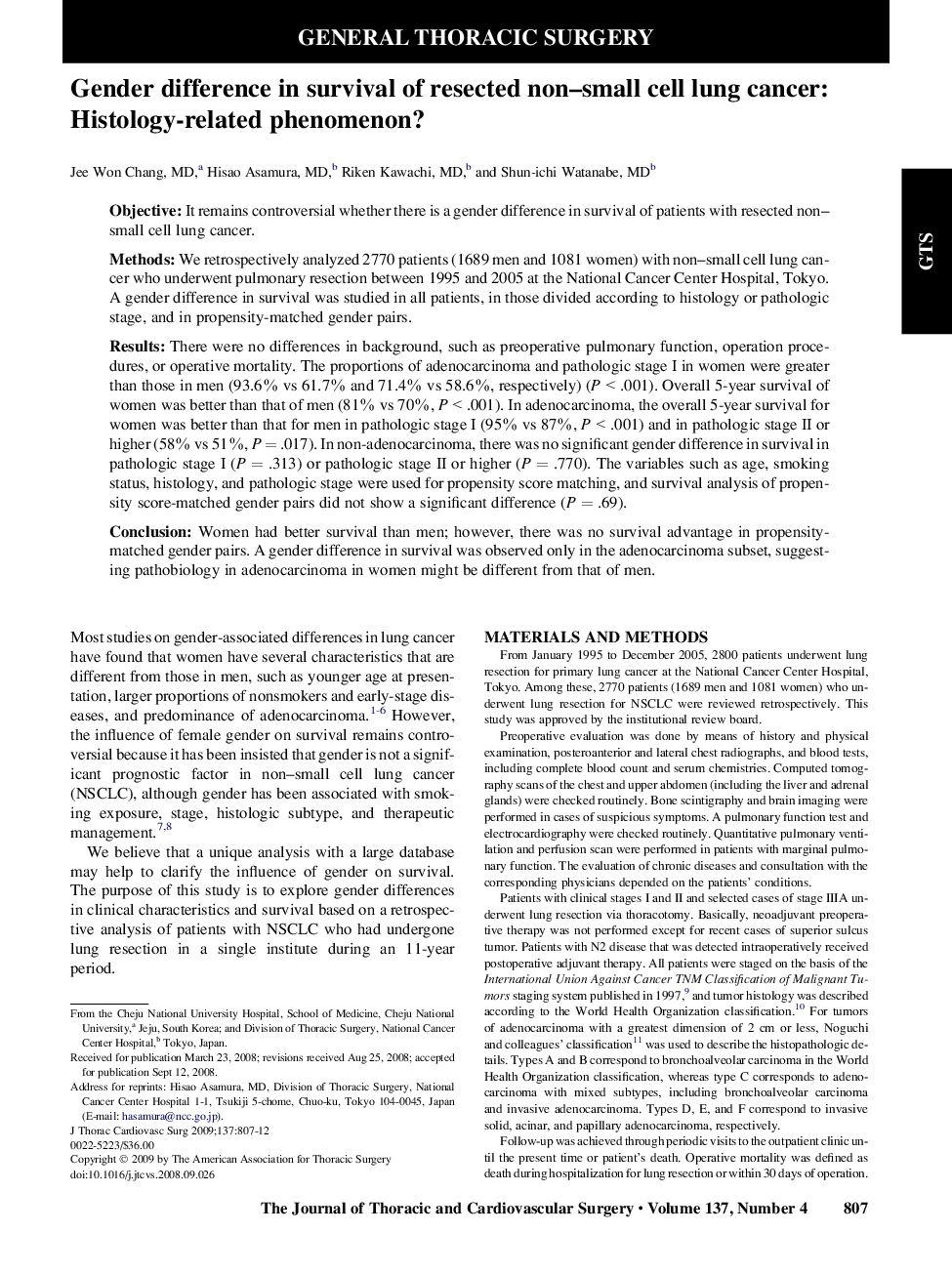| Article ID | Journal | Published Year | Pages | File Type |
|---|---|---|---|---|
| 2982364 | The Journal of Thoracic and Cardiovascular Surgery | 2009 | 6 Pages |
ObjectiveIt remains controversial whether there is a gender difference in survival of patients with resected non–small cell lung cancer.MethodsWe retrospectively analyzed 2770 patients (1689 men and 1081 women) with non–small cell lung cancer who underwent pulmonary resection between 1995 and 2005 at the National Cancer Center Hospital, Tokyo. A gender difference in survival was studied in all patients, in those divided according to histology or pathologic stage, and in propensity-matched gender pairs.ResultsThere were no differences in background, such as preoperative pulmonary function, operation procedures, or operative mortality. The proportions of adenocarcinoma and pathologic stage I in women were greater than those in men (93.6% vs 61.7% and 71.4% vs 58.6%, respectively) (P < .001). Overall 5-year survival of women was better than that of men (81% vs 70%, P < .001). In adenocarcinoma, the overall 5-year survival for women was better than that for men in pathologic stage I (95% vs 87%, P < .001) and in pathologic stage II or higher (58% vs 51%, P = .017). In non-adenocarcinoma, there was no significant gender difference in survival in pathologic stage I (P = .313) or pathologic stage II or higher (P = .770). The variables such as age, smoking status, histology, and pathologic stage were used for propensity score matching, and survival analysis of propensity score-matched gender pairs did not show a significant difference (P = .69).ConclusionWomen had better survival than men; however, there was no survival advantage in propensity-matched gender pairs. A gender difference in survival was observed only in the adenocarcinoma subset, suggesting pathobiology in adenocarcinoma in women might be different from that of men.
